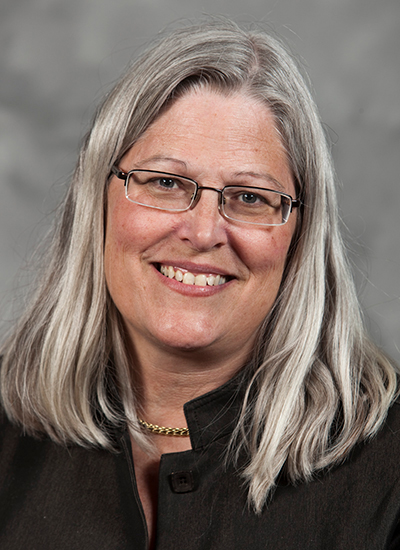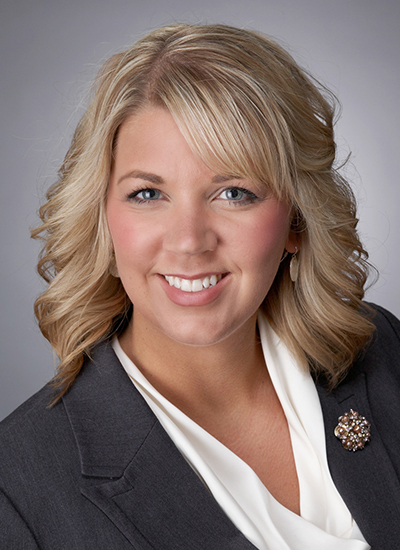
Oct. 17, 2018 – Margaret Hickey began her law career in the 1980s at a 30-attorney law firm in Milwaukee. Her first year, she had her first child. The partners agreed to reduce her office hours, but she was paid less while billing the same as other associates.
Soon after, she left for another firm where Barbara Becker was a partner, probably one of the only women partners in Milwaukee at the time, Hickey recalls. When that firm disbanded, Becker asked Hickey to join her as a partner in a new firm.
That firm is now called Becker, Hickey & Poster S.C., which has all women attorneys focusing on family and elder law issues. Hickey, former president of the Milwaukee Bar Association and leader in the Milwaukee legal community, understands the challenges for women attorneys with families and makes work-life balance a firm priority.
“We really try, in our firm, to accommodate people with families,” said Hickey. “When my partner was an associate, she had four little kids over the course of eight or ten years. Our policy allowed her to bring her children into the office, up to age one. Honestly, we never had any complaints from clients. We made it work.”
In other words, Hickey’s firm accommodates the schedules of its attorneys with lives beyond the firm. “When you are a partner in a big firm, you can’t do stuff like that.”
Insufficient work-life balance may be one reason women leave law firms having never advanced to partnerships, but it’s not the only reason. Implicit bias, sexual harassment, law firm culture, and unequal access to opportunity are cited as other reasons.1
Why Women Leave
Despite the relatively equal ratio of men and women graduating law schools and joining law firms in the last several decades, only about 20 percent of partners at major law firms are women.2 In turn, the legal profession continues to lose talented lawyers.
“When women lawyers leave the profession, there is a reduced range of legal talent to offer clients, a narrower base for firms and businesses to develop client relationships, and a limited ability to recruit and retain skilled women lawyers at all levels,” according to a recent report from the American Bar Association (ABA).3
The ABA’s Presidential Initiative on Achieving Long-Term Careers for Women in Law recently held summits as a springboard to more research on women lawyers and their disproportionately high rates of attrition, especially in law firms.

Margaret Hickey, a former president of the Milwaukee Bar Association and leader in the Milwaukee legal community, understands the challenges for women attorneys with families and makes work-life balance a firm priority.
Lack of Flexibility and Work-Life Balance. One summit report4 notes that “the burden of care-giving for both children and elderly parents and other family members continues to fall disproportionately on women,” and law firms aren’t recognizing that reality.
In other words, women are still generally viewed as the primary caregivers in the family, regardless of whether they are the primary breadwinners. Thus, in some circumstances, women lawyers may bear family obligations that male attorney counterparts don’t.
One survey from 350 large law firms found that 54 percent of women attorneys were responsible for arranging child care, compared to 1 percent of men.5
Similarly, 39 percent of women said they were responsible for cooking in their family, compared to 11 percent of men. And 34 percent of women said they leave work to address the needs of children, compared to 5 percent of men.
“The reluctance of some firms to encourage telecommuting; Face Time; Skype or other video conferencing; and the use of support services remotely to the maximum extent possible can exacerbate the problem,” the ABA report states.
“I think firms want to give people flexible schedules and focus on results-based work environments,” said Deanne Koll, a shareholder at Bakke Norman in New Richmond. “But underlying work pressures may conflict with those policies. Law firm life and client demands go on as scheduled.”
Koll, who has twin girls, is the second female shareholder in the firm’s almost 35-year history. “That’s really startling. When you lack strong, powerful female role models in firms, the failure to retain female attorneys in the future seems inevitable,” she said.
But Koll’s ability to juggle family with law firm ownership relies on a fully supportive husband. “Society’s gender roles don’t matter to him,” she said. “That’s the only way I can do it.
“The reality is, the social constraints regarding at-home obligations on women are a real problem for female advancement,” she said.
Hickey says, over the course of her career, she has seen a lot of very talented women leave the practice of law, and there may be different reasons why they did so.
“I can’t generalize, but the balancing act is probably part of it,” Hickey said. “Of the women I know, some of them left to raise families. Others went on to different careers.”

“When you lack strong, powerful female role models in firms, the failure to retain female attorneys in the future seems inevitable,” says Deanne Koll, a shareholder at Bakke Norman in New Richmond and only the second female shareholder in the firm’s almost 35-year history.
Unequal Access to Opportunity. At the ABA summit last year, part of the presidential initiative, panelists agreed that “informal systems and lack of transparency lead to unequal access to quality assignments, training and sponsorships, and client relationships,” access that is imperative for any lawyer to achieve success.
“The panelists noted that decentralized and subjective assignment, promotion, and compensation decisions or processes can allow unconscious biases to affect decisions about who advances and how much lawyers are paid,” an ABA report notes.
 Joe Forward, Saint Louis Univ. School of Law 2010, is a legal writer for the State Bar of Wisconsin, Madison. He can be reached by email or by phone at (608) 250-6161.
Joe Forward, Saint Louis Univ. School of Law 2010, is a legal writer for the State Bar of Wisconsin, Madison. He can be reached by email or by phone at (608) 250-6161.
The ABA report also noted that women tend to leave firms with fewer women partners, who would normally serve as role models and mentors to younger women attorneys.
“Women and women of color continue to suffer from a lack of sponsorship in law firms and companies,” the report notes. “There appears to be a lack of powerful leaders who are truly committed to the success of women as compared to men.
“When women realize that they have not had the benefit of the networking opportunities and relationships that determine success, they leave,” the ABA report says. “It is a rational decision especially for highly educated women who can pursue other options.”
In another recent survey of businesses and law firms, only 31 percent of women said men are allies in reaching gender equality.6
Tamara Packard is one of seven women partners at Madison-based Pines Bach, a 15-attorney firm with 10 women. Lester Pines hired Packard as an associate in 1999. There are various reasons she has stayed, but one of them is Pines’ mentorship.
“He has opened doors, he has made introductions,” said Packard, part of a panel last month on women in the law, presented by the Legal Association of Women.
Law Firm Culture. The ABA report notes that “law firms underestimate the extent to which women lawyers, and especially women lawyers of color, feel excluded from the ‘majority culture’ in firms” and a lack of senior women leaders exacerbates the problem.
“For example, the focus on sports tickets as a business development activity may feel exclusionary to women, as do the traditional golf and similar outings.
“It was suggested that years of feeling that they cannot bring their ‘authentic selves’ to the work place may lead many women to leave law firms mid-career.” Hickey said that’s how she felt 30 years ago, when she first began practicing law in Milwaukee.
“When I started, it was definitely a man’s world, even though 40 or 50 percent of the law school graduates were women. There were very few women partners, and you just had to do what the men did to succeed,” said Hickey.
There’s another aspect of law firm culture that undoubtedly drives women out: sexual harassment. The ABA’s House of Delegates addressed the problem recently by passing a resolution, urging legal employers to take measures to prevent sexual harassment.
“Based on a broad range of research data and anecdotal accounts, the legal profession is not immune from sexual harassment and its deleterious impact,” a report notes.7
“Many female lawyers report experiencing sexual harassment at work. The majority of women lawyers believe harassment is a problem in their workplace.”
Discussion on Women in the Law
The State Bar of Wisconsin is hosting “A Candid Discussion on Women in the Law” at the Wisconsin Solo and Small Firm Conference (WSSFC) Oct. 25-27, in Wisconsin Dells. Panelists include Wisconsin Appeals Court Judge JoAnne Kloppenburg, and attorneys Ann Jacobs and Rachel Monaco-Wilcox. The panel will discuss the growing number of women leaving the legal profession, and what law firms and other legal employers can do about it. Check out the WSSFC schedule or register now.
Wisconsin Data
Although much of the current ABA data is collected from larger U.S. law firms, the attrition rates seem on par with what may be happening in Wisconsin, home to many smaller and mid-sized firms, in terms of women lawyers who depart private practice.
The State Bar of Wisconsin’s latest Economics of Law Practice Report (2017) found that nearly half (49%) of the lawyers under age 40 working in private practice are women. That is, half of the associates in Wisconsin law firms are women, based on the sample.
However, only 40 percent of Wisconsin private practitioners between ages 40 and 49 are women, one-third (33 percent) between ages 50 to 59 are women, and only 13 percent of private practice lawyers ages 60 and older are women. These numbers suggest that many women depart law firms before becoming managers or partners.
The 2017 Economics of Law Practice Report also supports the conclusion that women are paid less than male counterparts in law firms, for reasons unknown, and the pay disparity gap is most pronounced between the 11- and 15-year marks.
For instance, male attorneys reported median gross incomes between five and 14 percent higher than women attorneys in the first 10 years.
However, gender pay disparity jumped to 38 percent for attorneys with 11 to 15 years in practice. Pay disparity may be another reason women are leaving law firms.
Moving Forward
The legal profession has come a long way since the Wisconsin Supreme Court, in 1875, told Lavinia Goodall her gender precluded admission to the Wisconsin bar, that under “the law of nature,” women were best suited to raise children and keep the home.
In fact, six of the seven justices on the Wisconsin Supreme Court are now women, with the addition of Justice Rebecca Dallet this term. Also, women outnumber men (for the first time) on the State Bar of Wisconsin’s 52-member Board of Governors.
In 2016, women outnumbered men in U.S. law schools for the first time in history. This year, for the first time ever, women outnumber men at Marquette Law School. Thus, the once male-dominated legal profession consistently boasts equal parts men and women.
Despite these equal ratios, it appears many law firms have not changed their models or policies to assure retention and advancement of women to the highest ranks. The ABA and other legal organizations are actively exploring how law firms can change that.
Endnotes
1 #MeToo Workplace Study from the ABA and Working Mother Media (March 2018).
2 Current Glance at Women in the Law, ABA Commission on Women in the Legal Profession (January 2018).
3 Report on the National Summit Held at Harvard Law School (Nov. 2017), ABA Presidential Initiative on Achieving Long-Term Careers for Women in the Law.
4 Id.
5 Why do experienced female lawyers leave? Disrespect, social constraints, ABA survey says, ABA Journal (Aug. 3, 2018).
6 Little agreement between the sexes on tackling harassment, Working Mother/ABA Journal Survey finds, ABA Journal (July 24, 2018).
7 ABA Commission on Women in the Profession, Section of Litigation Section of Civil Rights and Social Justice, Report to the House of Delegates, Resolution 302 (February 2018).
